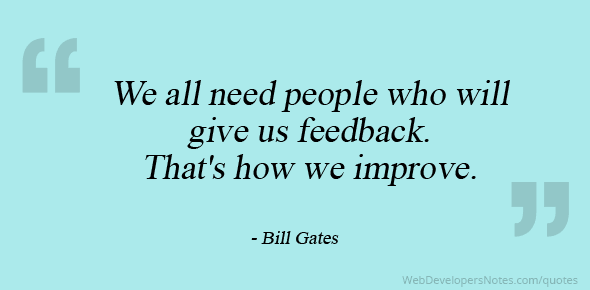
There are two sides to the story of security of online assessments. On the one side, cheating does exist in online assessments. Examity’s president Michael London summarized five common ways students cheat on online exams:
- The old-school try of notes;
- The screenshot;
- The water break;
- The cover-up; and
- The big listen through devices such as Bluetooth headset (London, 2017).
Newton (2015) even reported the disturbing fact that “cheating in online classes is now big business”. On the other side, academic dishonesty is a problem of long history, both on college campuses and in online courses. The rate of students who admit to cheating at least once in their college careers has held steady at somewhere around 75 percent since the first major survey on cheating in higher education in 1963 (Lang, 2013). Around 2000, Many faculty and students believed it was easier to cheat in online classes (Kennedy, 2000), and about a third of academic leaders perceived online outcomes to be inferior to traditional classes (Allen & Seaman, 2011). However, according to Watson and Sottile (2010) and other comparative studies (Pilgrim & Scanlon, 2018), there is no conclusive evidence that online students are more likely to cheat than face-to-face students. “Online learning is, itself, not necessarily a contributing factor to an increase in academic misconduct (Pilgrim & Scanlon, 2018)”.
Since there are so many ways for students to cheat in online assessments, how can we make online assessments more effective in evaluating students’ learning? Online proctoring is a solution that is easy for instructors but adds a burden of cost to students. Common online proctoring service providers include ProctorU, Examity, Proctorio, Honorlock, to name just a few (Bentley, 2017).
Fortunately, there are other ways to assess online learning without overly concerned with academic dishonesty. Vicky Phillips (n.d.) suggested that authentic assessment makes it extremely difficult to fake or copy one’s homework. The University of Maryland University College has consciously moving away from proctored exams and use scenario-based projects as assessments instead (Lieberman, 2018). James Lang (2013) suggested smaller class sizes will allow instructor to have more instructor-to-students interaction one-on-one and limit cheating to the minimum therefore; Pilgrim and Scanlon (2018) suggest changing assessments to reduce the likelihood of cheating (such as demonstrating problem solving in person or via video, using plagiarism detection software programs like TurnItIn, etc.) , promote and establish a culture of academic integrity (such as honor’s code, integrity pledge), and supporting academic integrity through appropriate policies and processes. Kohnheim-Kalkstein (2006) reports that the use of a classroom honor code has been shown to reduce cheating. Kohnheim-Kalkstein, Stellmack, and Shilkey (2008) report that use of classroom honor code improves rapport between faculty and students, and increases feelings of trust and respect among students. Gurung, Wilhelm and Fitz (2012) suggest that an honor pledge should include formal language, state the specific consequences for cheating, and require a signature. For the honor pledge to be most effective, Shu, Mazar, Gino, Ariely, and Bazerman (2012) suggests including the honor pledge on the first page of an online assessment or online assignment, before students take the assessment or work on the assignment.
Rochester Institute of Technology (2014) ’s Teaching Elements: Assessing Online Students offer a variety of ways to assess students, including discussions, low-stake quizzes, writing assignments (such as muddiest point paper), and individual activities (such as staged assignments for students to receive ongoing feedback), and many other activities.
In summary, there are plenty of ways to design effective formative or summative assessments online that encourage academic honesty, if instructors and course designers are willing to spend the time to try out suggested strategies from literature.
References
Bentley, Kevin. (2017). What to consider when selecting an online exam proctoring service. Inside HigherEd. (June 21, 2017). Retrieved from https://www.insidehighered.com/digital-learning/views/2017/06/21/selecting-online-exam-proctoring-service on February 22, 2019.
Gurung, R. A. R., Wilhelm, T. M., & Filz, T. (2012). Optimizing honor codes for online exam administration. Ethics & Behavior, 22, 158–162.
Konheim-Kalkstein, Y. L. (2006). Use of a classroom honor code in higher education. Journal of Credibility Assessment and Witness Psychology, 7, 169–179.
Konheim-Kalkstein,Y. L., Stellmack, M. A., & Shilkey, M. L. (2008). Comparison of honor code and non-honor code classrooms at a non-honor code university. Journal of College & Character, 9, 1–13.
J.M. Lang. (2013). How college classes encourage cheating. Boston Globe. Retrieved from https://www.bostonglobe.com/ideas/2013/08/03/how-college-classes-encourage-cheating/3Q34x5ysYcplWNA3yO2eLK/story.html on February 21, 2019.
Lieberman, Mark. (2018). Exam proctoring for online students hasn’t yet transformed. Inside Higher Ed (October 10, 2018). Retrieved from https://www.insidehighered.com/digital-learning/article/2018/10/10/online-students-experience-wide-range-proctoring-situations-tech, on February 22, 2019.
Michael London. (2017). 5 Ways to Cheat on Online Exams. Inside Higher Ed (09/20/2017). Retrieved from https://www.insidehighered.com/digital-learning/views/2017/09/20/creative-ways-students-try-cheat-online-exams on February 21, 2019.
Derek Newton. (2015). Cheating in Online Classes is now big business. The Atlantic. Retrieved from https://www.theatlantic.com/education/archive/2015/11/cheating-through-online-courses/413770/ on February 21, 2019.
Vicky Phillips. (n.d.). Big Fat Online Education Myths – students cheat like weasels in Online Classes. GetEducated. Retrieved from https://www.geteducated.com/elearning-education-blog/big-fat-online-education-myths-students-cheat-like-weasels-in-online-classes/ on February 21, 2019.
Chris Pilgrim and Christopher Scanlon. (2018). Don’t assume online students are more likely to cheat. The evidence is murky. Retrieved from https://phys.org/news/2018-07-dont-assume-online-students-evidence.html on February 21, 2019.
Rochester Institute of Technology. (2014). Teaching Elements: Assessing Online Students. Retrieved from https://www.rit.edu/academicaffairs/tls/sites/rit.edu.academicaffairs.tls/files/docs/TE_Online%20Assessmt.pdf on February 21, 2019.
Shu, L. L., Mazar, N., Gino, F., Ariely, D., & Bazerman, M. H. (2012). Signing at the beginning makes ethics salient and decreases dishonest self-reports in comparison to signing at the end. PNAS, 109, 15197–15200.
George Watson. And James Sottile. (2010). Cheating in digital age: Do students cheat more in online courses? Online Journal of Distance Learning Administration 13(1). Retrieved from https://www.westga.edu/~distance/ojdla/spring131/watson131.html on February 21, 2019



